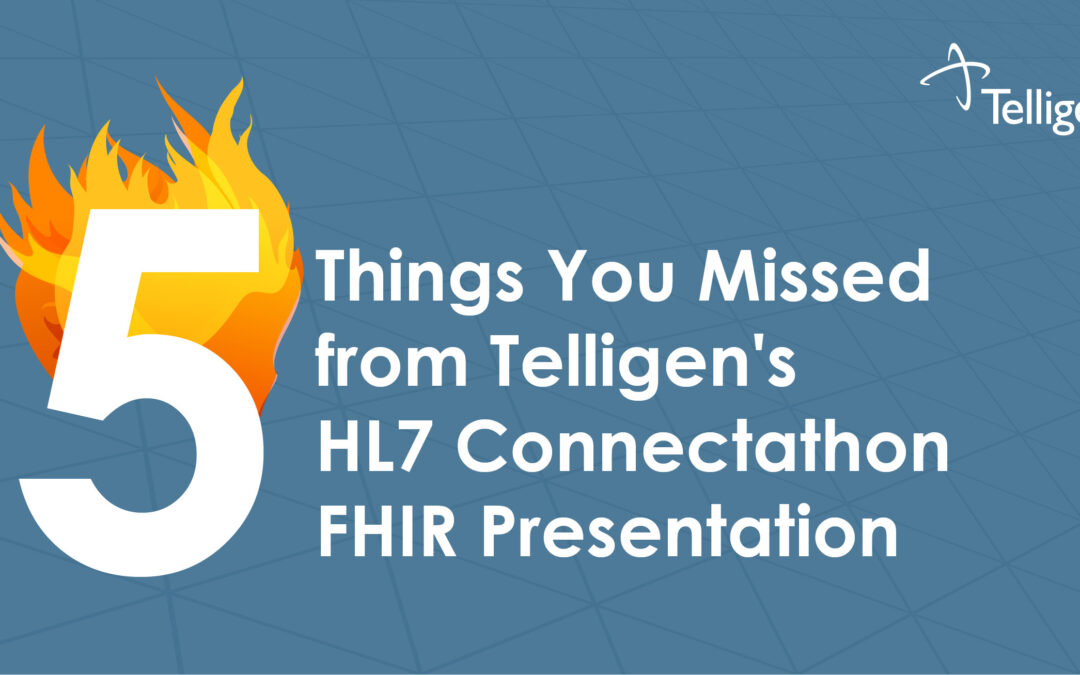On Wednesday, May 4, Telligen participated in HL7 International’s latest FHIR Connectathon. This event offers insights from developers who have implemented FHIR-based APIs into their healthcare IT systems, giving participants the chance to learn more about this emerging technology.
As an early adopter of FHIR, Telligen presented on its latest use case, which focused on applying FHIR to quality measures in our proprietary Qualitrac® health data management suite. The following are the Top 5 takeaways from Telligen’s presentation, “Clinical Reasoning: Telligen FHIR-based Quality Measures.”
#1 – Telligen launched its FHIR Quality Measure Engine (QME)
Telligen’s FHIR Quality Measures Engine performs quality measure processing at patient-level, practitioner-level, and population-level. The engine evaluates quality measure logic by Clinical quality language (CQL) evaluation. It also performs Data Exchange for Quality Measures (DEQM) Operations such as $submit-data paving the way for real-time API based data submissions. It comes with built-in FHIR-based clinical data repository, exposing a FHIR-compliant REST API.
#2 – Demonstration of end-to-end data workflow including data generation, measure calculation and analytic reporting capabilities
The full end-to-end architecture was presented diagrammatically and described.
Measures selected for presentation were described denoting criteria for their selection along with some of the customizations we made. These measures include breast cancer screening, statin therapy for the prevention and treatment of cardiovascular disease, and safe use of opioids via concurrent prescribing.
We also demonstrated how we used open-source Synthea Module Builder for patient bundle generation, loading patient bundles into FHIR Server with PostgreSQL repository and execution of the FHIR based quality measure, and walked through the measure results on the clinical quality dashboard.
#3 – Demonstration of analytic dashboarding capabilities to provide data insights for managing populations and identifying quality improvement opportunities
All the three selected quality measures were demonstrated with the QME analytic dashboard, including navigation of the dashboard menu, the primary visual of the measure result trended over time, month over month, year over year for two measurement years and with performance against attainment and benchmark values. Additional visualizations supporting interactive selection of organizations (ACO or hospital) and comparative performance of organizations and practitioners.
#4 – Highlighted supported HL7 FHIR Implementation Guides (IGs)
QI-Core IG – FHIR profiles with extensions and bindings needed to create interoperable, quality-focused applications.
Quality Measure IG – An approach to representing electronic Clinical Quality Measures (eCQMs) using the FHIR Clinical Reasoning Module and Clinical Quality Language (CQL) in the US Realm.
Data Exchange for Quality Measures (DEQM) IG – Supports value-based care data exchange in the US Realm.
#5 – Earned recognition as one of the highest attended sessions of the event
Being one of the most popular sessions at this event is proof that Telligen’s emerging work with FHIR is catching the interest among the various healthcare audiences in the interoperability space. Attendance for Telligen’s session included key members of the HL7 Clinical Reasoning Format and Workgroups, Measure Authors, Payers, and people from the Clinical Community.
If you would like to learn more on how Telligen is utilizing FHIR to modernize its population health IT services, contact Brian Barry, vice president of enterprise solutions at Telligen.

